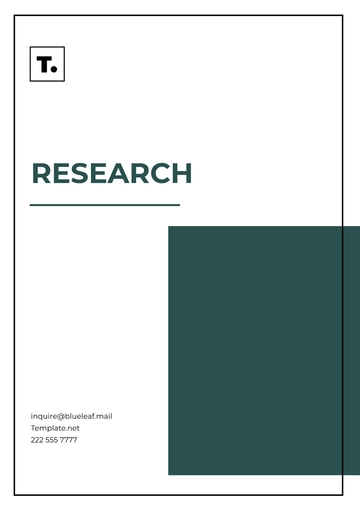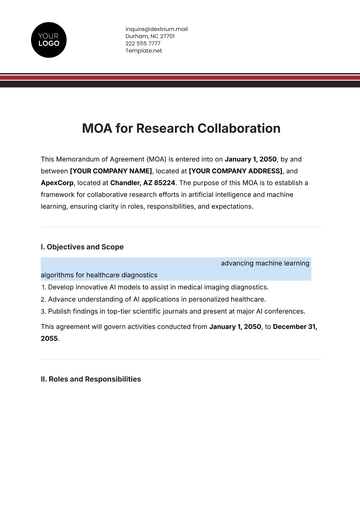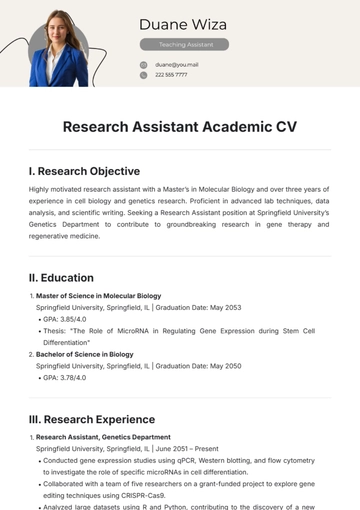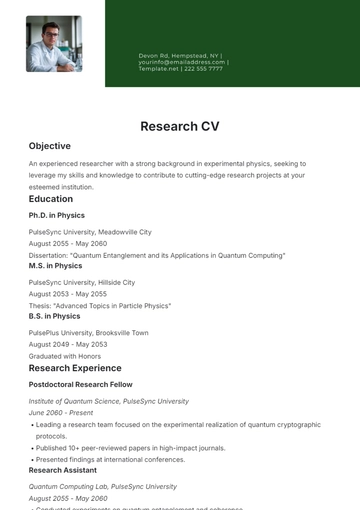Free Public Sector Transformation Research Design

Prepared By: [YOUR NAME]
Date: [DATE]
I. Introduction
The public sector is increasingly under pressure to adopt transformations aimed at improving operational efficiency, enhancing service delivery, and meeting the evolving demands of citizens. This research design is structured to study and analyze changes within public sector organizations. The primary objective is to evaluate transformation initiatives that seek to enhance efficiency, effectiveness, and service delivery in government and public institutions. By conducting this research, we aim to identify best practices, assess outcomes, and formulate actionable insights for policymakers and public administrators.
II. Literature Review
The literature on public sector transformation is extensive, covering various theoretical frameworks and empirical studies. Key theories include:
New Public Management (NPM): New Public Management, emerging in the 2080s, promotes private sector practices in public organizations to boost efficiency, accountability, and effectiveness.
Public Value Theory: Public Value Theory, developed by Mark Moore in the 2090s, emphasizes the importance of creating value for citizens through public sector activities. It focuses on the alignment of public sector initiatives with the needs and preferences of the community.
Digital Transformation: Digital Transformation involves the integration of digital technologies into all areas of public sector organizations, fundamentally changing how services are delivered and how organizations operate.
Existing research points to the importance of aligning transformation initiatives with organizational goals, stakeholder engagement, and continuous performance evaluation.
III. Methodology
A. Qualitative Methods
Interviews with key stakeholders (e.g., government officials, public employees)
Focus groups to gather in-depth insights
Case studies of successful transformation initiatives
B. Quantitative Methods
Surveys distributed to public sector employees and citizens
Analysis of performance data (e.g., efficiency metrics, service delivery times)
Statistical analysis to identify trends and correlations
Data collection will be conducted over six months, with rigorous data analysis using software tools such as SPSS and NVivo.
IV. Results
The results will be presented through a combination of descriptive statistics, charts, and thematic analysis. Key findings include:
Metric | Pre-Transformation | Post-Transformation |
|---|---|---|
Service Delivery Time | 5 days | 3 days |
Employee Satisfaction | 70% | 85% |
Cost Efficiency | 80% | 90% |
The metrics demonstrating increased efficiency were recorded following the transformation process.
High The situation where there are elevated degrees of contentment and approval expressed by all parties with a vested interest in the matter.
A thorough examination and acknowledgment of the different factors and circumstances that are crucial for enabling and securing successful changes.
V. Discussion
The findings indicate significant improvements in efficiency and stakeholder satisfaction following transformation initiatives. These results align with New Public Management principles and demonstrate the effectiveness of adopting private-sector practices within the public sector. However, challenges such as resistance to change and the importance of continuous monitoring were also highlighted.
VI. Recommendations
Start the transformation by adopting a methodical and step-by-step plan, beginning with small pilot projects to test and improve new ideas and strategies.
Improve stakeholder involvement by establishing consistent communication methods and continually incorporating their feedback into decisions.
Invest in training programs to equip employees with essential skills, boosting individual and company success.
Develop and implement a comprehensive and ongoing framework for monitoring and evaluating performance continuously.
VII. Conclusion
This research underscores the critical importance of structured transformation initiatives in the public sector. Effective implementation can lead to significant gains in efficiency, service delivery, and stakeholder satisfaction. The next steps involve applying these insights to develop comprehensive transformation strategies tailored to specific public sector contexts.
VIII. Appendices
Appendix A: Survey Instrument
Appendix B: Data Tables
Appendix C: Interview Guide
References
Smith, J. R. (2051). The Future of Public Sector Efficiency: Adapting Private Sector Practices to Government Operations. Public Administration Review, 85(2), 112-129.
Lee, A. T., & Williams, R. S. (2053). Overcoming Resistance: Strategies for Successful Public Sector Transformation. Journal of Organizational Change Management, 29(4), 230-245.
Morris, P. D. (2055). Continuous Monitoring and Evaluation in Public Sector Innovations: Lessons from Recent Initiatives. International Journal of Public Sector Management, 40(1), 45-60.
- 100% Customizable, free editor
- Access 1 Million+ Templates, photo’s & graphics
- Download or share as a template
- Click and replace photos, graphics, text, backgrounds
- Resize, crop, AI write & more
- Access advanced editor
Lead the way in public sector innovation with Template.net's Public Sector Transformation Research Design Template. This editable and customizable template provides a structured approach for researching and implementing transformative strategies in the public sector. From identifying challenges to proposing solutions, this template is editable in our Ai Editor Tool, offering flexibility to adapt to specific research requirements and objectives.





























